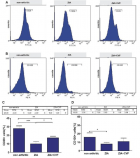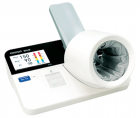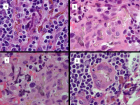Abstract
Opinion
COPD and low plasma vitamin D levels: Correlation or causality?
Luca Gallelli*, Erika Cione, Stefania Zampogna and Gino Scalone
Published: 27 October, 2018 | Volume 2 - Issue 1 | Pages: 011-012
Chronic obstructive pulmonary disease (COPD) is the third leading cause of death and its prevalence and incidence is also related to smoking behavior [1]. COPD is still a chronic inflammatory and progressive disease caused by multifactorial agents including environmental pollutants [2]. Besides that, it is emerging that endogenous epigenetic factors induced by lifestyle and environment [3] could play a role in the etiopathogenesis of the disease [4].
In the last years, several authors suggested that low vitamin D levels seem to be related with the increase of COPD manifestations [5]. Moreover, a multicentre, double-blind, randomised controlled trial documented that vitamin D supplementation protects against moderate or severe exacerbation of the disease, but not by upper respiratory infections [6]. However, low levels of vitamin D can be extended to many other diseases, including multiple sclerosis, diabetes, colon rectal cancer, headache or drug use [7-11]. Moreover, it is also important to remember that Vitamin D deficiency is common in high latitude regions, such as northern Europe, New Zealand, northern USA, and Canada where weaker ultraviolet B rays is not able to produce enough vitamin D. Finally, methodological factors (using low sensitivity methods) could contribute to misleading evaluation of circulating vitamin D levels. In any case, here we shall remind that vitamin D has a fundamental role in immunity [12]. In particular, it has been reported that vitamin D is able to shift the pro-inflammatory T-helper cell 1 to anti-inflammatory T-helper cell 2 [13]. Therefore, benefits of vitamin D supplementation in chronic diseases which directly or indirectly affect immune system are obvious. Today, the burden of COPD in never smokers is higher than previously believed. Therefore, more research is needed to unravel the characteristics of non-smokers COPD [1]. Notably, vitamin D levels are reported to be significantly lower in smoker’ssubjects than in non-smokers ones [14]. Therefore, low plasma vitamin D levels in COPD seems to be more a causality than a correlation.
Read Full Article HTML DOI: 10.29328/journal.jprr.1001008 Cite this Article Read Full Article PDF
References
- Terzikhan N, Verhamme KM, Hofman A, Stricker BH, Brusselle GG, et al. Prevalence and incidence of COPD in smokers and non-smokers: the Rotterdam Study. European journal of epidemiology. 2016; 31: 785-792. Ref.: https://goo.gl/4cW5ku
- Punturieri A, Szabo E, Croxton TL, Shapiro SD, Dubinett SM. Lung cancer and chronic obstructive pulmonary disease: needs and opportunities for integrated research. Journal of the National Cancer Institute. 2009; 101: 554-559. Ref.: https://goo.gl/c5qK3w
- Cione E, Gallelli L. Direct Detection of Circulating MicroRNAs Unveiled the Absence of MicroRNA-218-5p in Smoker Subjects. American journal of respiratory and critical care medicine. 2017; 196: 532. Ref.: https://goo.gl/jQNNdy
- Sauler M, Lamontagne M, Finnemore E, Herazo-Maya JD, Tedrow J, Zhang X, et al. The DNA repair transcriptome in severe COPD. The European respiratory journal. 2018; 52. Ref.: https://goo.gl/9DV2gP
- Romme EA, Rutten EP, Smeenk FW, Spruit MA, Menheere PP, et al. Vitamin D status is associated with bone mineral density and functional exercise capacity in patients with chronic obstructive pulmonary disease. Annals of medicine. 2013; 45: 91-96. Ref.: https://goo.gl/nzBDpE
- Martineau AR, James WY, Hooper RL, Barnes NC, Jolliffe DA, et al. Vitamin D3 supplementation in patients with chronic obstructive pulmonary disease (ViDiCO): a multicentre, double-blind, randomised controlled trial. The Lancet Respiratory medicine. 2015; 3: 120-130. Ref.: https://goo.gl/cMrz5t
- Torkildsen O, Knappskog PM, Nyland HI, Myhr KM. Vitamin D-dependent rickets as a possible risk factor for multiple sclerosis. Archives of neurology. 2008; 65: 809-811. Ref.: https://goo.gl/6GpjLh
- Afzal S, Bojesen SE, Nordestgaard BG. Low 25-hydroxyvitamin D and risk of type 2 diabetes: a prospective cohort study and metaanalysis. Clin Chem. 2013; 59: 381-391. Ref.: https://goo.gl/7QNjbv
- Lee JE, Li H, Chan AT, Hollis BW, Lee IM, et al. Circulating levels of vitamin D and colon and rectal cancer: the Physicians' Health Study and a meta-analysis of prospective studies. Cancer Prev Res (Phila). 2011; 4: 735-743. Ref.: https://goo.gl/2yoAXJ
- Iannacchero R, Costa A, Squillace A, Gallelli L, Cannistra U, et al. P060. Vitamin D deficiency in episodic migraine, chronic migraine and medication-overuse headache patients. J Headache Pain. 2015; 16 (Suppl 1): A184. Ref.: https://goo.gl/m2s568
- Siniscalchi A, De Arro G, Michniewicz A, Gallelli L. Conventional and New Antiepileptic Drugs on Vitamin D and Bone Health: What We Know to Date? Curr Clin Pharmacol. 2016; 11: 69-70. Ref.: https://goo.gl/EjxsDh
- Heulens N, Korf H, Janssens W. Innate immune modulation in chronic obstructive pulmonary disease: moving closer toward vitamin D therapy. J Pharmacol Exp Ther. 2015; 353: 360-368. Ref.: https://goo.gl/veWLP5
- Cantorna MT, Humpal-Winter J, DeLuca HF. In vivo upregulation of interleukin-4 is one mechanism underlying the immunoregulatory effects of 1,25-dihydroxyvitamin D(3). Archives of biochemistry and biophysics. 2000; 377: 135-138. Ref.: https://goo.gl/CzMXdu
- Ren W, Gu Y, Zhu L, Wang L, Chang Y, et al. The effect of cigarette smoking on vitamin D level and depression in male patients with acute ischemic stroke. Comprehensive psychiatry. 2016; 65: 9-14. Ref.: https://goo.gl/nCS2Fg
Similar Articles
-
Avoiding confusion in high flow oxygen therapy conceptsGarcía G,Valencia P,Mercedes E, Sarhane Y,Díaz-Lobato S*,Agosta M. Avoiding confusion in high flow oxygen therapy concepts. . 2017 doi: 10.29328/journal.jprr.1001001; 1: 001-002
-
Acute and chronic changes in massive Barium Sulfate aspiration in an infant who subsequently was diagnosed with severe Gastro-esophageal RefluxSevgi Pekcan*. Acute and chronic changes in massive Barium Sulfate aspiration in an infant who subsequently was diagnosed with severe Gastro-esophageal Reflux . . 2017 doi: 10.29328/journal.jprr.1001002; 1: 003-008
-
Successful Therapy with intravenous gamma globulin in two children with postinfectious bronchiolitis obliteransSevgi Pekcan,Bahar Gökturk*, Ismail Reisli. Successful Therapy with intravenous gamma globulin in two children with postinfectious bronchiolitis obliterans. . 2017 doi: 10.29328/journal.jprr.1001003; 1: 009-012
-
Fluticasone furoate/Vilanterol 92/22 μg once-a-day vs Beclomethasone dipropionate/Formoterol 100/6 μg b.i.d. in asthma patients: a 12-week pilot studyClaudio Terzano*,Francesca Oriolo. Fluticasone furoate/Vilanterol 92/22 μg once-a-day vs Beclomethasone dipropionate/Formoterol 100/6 μg b.i.d. in asthma patients: a 12-week pilot study . . 2017 doi: 10.29328/journal.jprr.1001004; 1: 013-022
-
A decade of targeted therapy for non-small cell lung cancerKhalid Abu Ajaj*. A decade of targeted therapy for non-small cell lung cancer. . 2017 doi: 10.29328/journal.jprr.1001005; 1: 023-027
-
Successful treatment of late-onset pulmonary hypertension after atrial septal defect operation with macitentan: Our center experienceTarik Kivrak*,Zeynep Ulutas,Sena Sert, Bulent Mutlu. Successful treatment of late-onset pulmonary hypertension after atrial septal defect operation with macitentan: Our center experience . . 2018 doi: 10.29328/journal.jprr.1001006; 2: 001-003
-
Effect of diabetes mellitus on the Pulmonary Function Tests in Sudanese Diabetic PatientsElmutaz H Taha,Ibrahim A Ali*,Omer A Musa. Effect of diabetes mellitus on the Pulmonary Function Tests in Sudanese Diabetic Patients . . 2018 doi: 10.29328/journal.jprr.1001007; 2: 004-010
-
COPD and low plasma vitamin D levels: Correlation or causality?Luca Gallelli*, Erika Cione,Stefania Zampogna, Gino Scalone. COPD and low plasma vitamin D levels: Correlation or causality? . . 2018 doi: 10.29328/journal.jprr.1001008; 2: 011-012
-
Peculiarities of photon emisson of whole non-diluted human blood obtained from healthy donors and patients with some diseasesKirill N Novikov*,Vladimir L Voeikov,Ekaterina V Buravleva,Nadezhda G Berdnikova. Peculiarities of photon emisson of whole non-diluted human blood obtained from healthy donors and patients with some diseases . . 2018 doi: 10.29328/journal.jprr.1001009; 2: 013-019
-
Stethoscope - Over 200 yearsHenrik Permin*,Svend Norn . Stethoscope - Over 200 years . . 2019 doi: 10.29328/journal.jprr.1001010; 3: 001-008
Recently Viewed
-
Relationship between Vitamin D Deficiency and Lipopolysaccharides Porphyromonas gingivalis Bacteria in Stunting ChildrenErwin Gunawan*,Ria Puspitawati. Relationship between Vitamin D Deficiency and Lipopolysaccharides Porphyromonas gingivalis Bacteria in Stunting Children. Ann Biomed Sci Eng. 2024: doi: 10.29328/journal.abse.1001033; 8: 059-065
-
Addiction to self-strangulation: a case-reportAurely Ameller*,Yann Le Strat,Marion Cadranel,Celine Portalier, Caroline Dubertret. Addiction to self-strangulation: a case-report . J Addict Ther Res. 2017: doi: 10.29328/journal.jatr.1001003; 1: 016-021
-
Nanoencapsulated Extracts from Leaves of Bauhinia forficata Link: In vitro Antioxidant, Toxicogenetic, and Hypoglycemic Activity Effects in Streptozotocin-induced Diabetic MiceBárbara Verônica Cardoso de Souza, Alessandra Braga Ribeiro*, Rita de Cássia Meneses Oliveira, Julianne Viana Freire Portela, Ana Amélia de Carvalho Melo Cavalcante, Esmeralda Maria Lustosa Barros, Luís Felipe Lima Matos, Tarsia Giabardo Alves, Maria. Nanoencapsulated Extracts from Leaves of Bauhinia forficata Link: In vitro Antioxidant, Toxicogenetic, and Hypoglycemic Activity Effects in Streptozotocin-induced Diabetic Mice. Arch Pharm Pharma Sci. 2024: doi: 10.29328/journal.apps.1001063; 8: 100-115
-
Oral Suspension as Versatile Galenic Formulation in PediatryMauro Luisetto*, Almukthar N, Edbey K, Mashori GR, Fiazza C, Dona’ l, Cabianca L, Latyshev O. Oral Suspension as Versatile Galenic Formulation in Pediatry. Arch Pharm Pharma Sci. 2024: doi: 10.29328/journal.apps.1001062; 8: 091-099
-
Modulation of Microbiota and its Impact on DepressionKousik Maparu*. Modulation of Microbiota and its Impact on Depression. Arch Pharm Pharma Sci. 2024: doi: 10.29328/journal.apps.1001061; 8: 089-090
Most Viewed
-
Evaluation of Biostimulants Based on Recovered Protein Hydrolysates from Animal By-products as Plant Growth EnhancersH Pérez-Aguilar*, M Lacruz-Asaro, F Arán-Ais. Evaluation of Biostimulants Based on Recovered Protein Hydrolysates from Animal By-products as Plant Growth Enhancers. J Plant Sci Phytopathol. 2023 doi: 10.29328/journal.jpsp.1001104; 7: 042-047
-
Sinonasal Myxoma Extending into the Orbit in a 4-Year Old: A Case PresentationJulian A Purrinos*, Ramzi Younis. Sinonasal Myxoma Extending into the Orbit in a 4-Year Old: A Case Presentation. Arch Case Rep. 2024 doi: 10.29328/journal.acr.1001099; 8: 075-077
-
Feasibility study of magnetic sensing for detecting single-neuron action potentialsDenis Tonini,Kai Wu,Renata Saha,Jian-Ping Wang*. Feasibility study of magnetic sensing for detecting single-neuron action potentials. Ann Biomed Sci Eng. 2022 doi: 10.29328/journal.abse.1001018; 6: 019-029
-
Pediatric Dysgerminoma: Unveiling a Rare Ovarian TumorFaten Limaiem*, Khalil Saffar, Ahmed Halouani. Pediatric Dysgerminoma: Unveiling a Rare Ovarian Tumor. Arch Case Rep. 2024 doi: 10.29328/journal.acr.1001087; 8: 010-013
-
Physical activity can change the physiological and psychological circumstances during COVID-19 pandemic: A narrative reviewKhashayar Maroufi*. Physical activity can change the physiological and psychological circumstances during COVID-19 pandemic: A narrative review. J Sports Med Ther. 2021 doi: 10.29328/journal.jsmt.1001051; 6: 001-007

HSPI: We're glad you're here. Please click "create a new Query" if you are a new visitor to our website and need further information from us.
If you are already a member of our network and need to keep track of any developments regarding a question you have already submitted, click "take me to my Query."

















































































































































